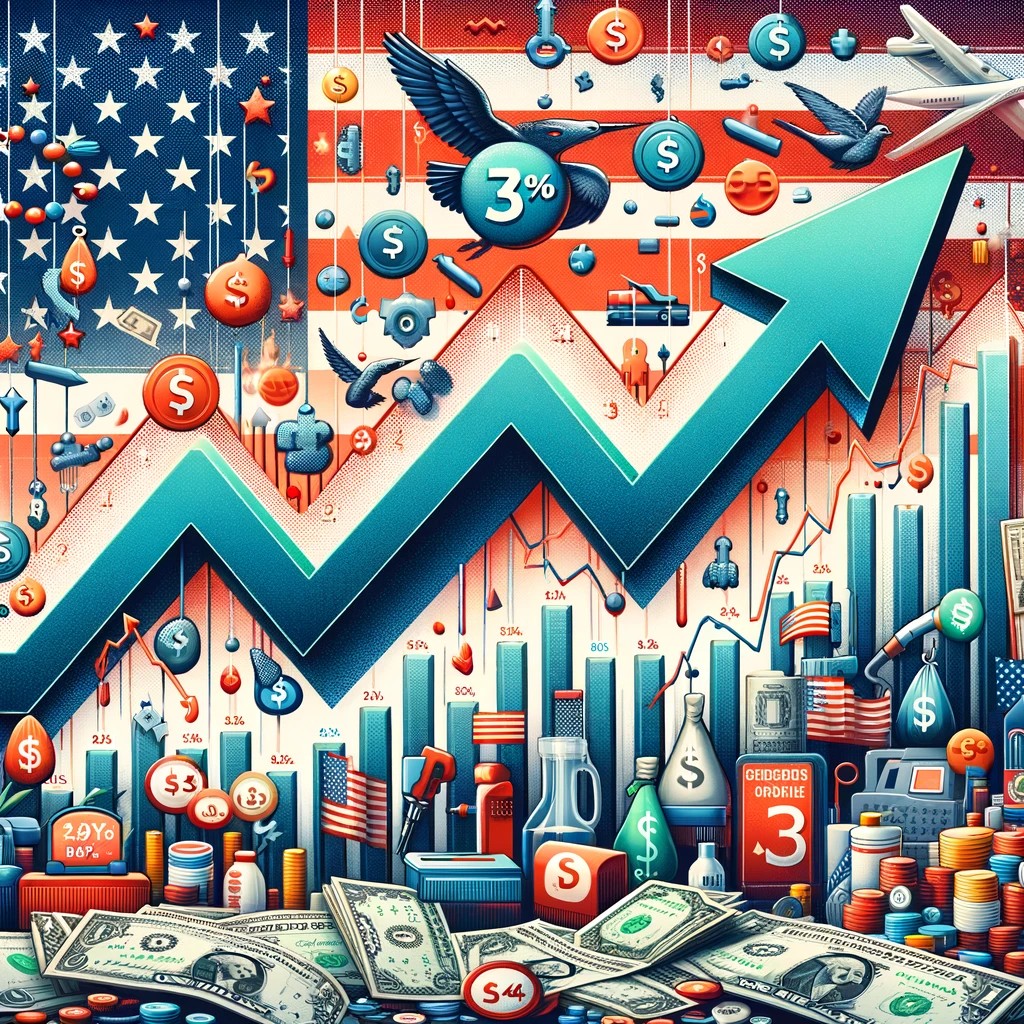The U.S. economy, often a kaleidoscope of numbers and predictions, has thrown a curveball yet again. The latest inflation data, a robust indicator of economic health, soared to a striking 3.4% in December, surpassing the projections of many sharp-witted economists. This uptick, albeit slight, is a stark reminder that economic forecasts are not set in stone, and the path to economic stability is more of a rollercoaster than a serene cruise.
The Core of Inflation: An Unexpected Twist
Amidst the cacophony of market predictions and economic theories, the core inflation rate, which meticulously excludes the often-volatile food and energy sectors, clocked in at 3.9% for the year up to December. This figure, slightly milder than November’s 4%, might offer a smidgen of relief. However, it’s akin to finding a slightly smaller needle in a haystack of economic challenges. The month-on-month core rate, a crucial metric for the Federal Reserve, stood firm at 0.3%, showcasing the persistent nature of inflationary pressures.
This uptick in inflation did not go unnoticed in the financial markets. Stock market futures took a modest dip, while the Treasury yields, those ever-fluctuating barometers of investor sentiment, nudged upwards. Specifically, the two-year Treasury yield, which is a dance partner to interest rate expectations, climbed to 4.38%, a minor yet telling increase.
Housing and Dining: The Price We Pay
The housing sector, an essential component of the U.S. economy, was a significant contributor to this inflationary push. Accounting for over half of the headline increase, housing costs are more than just numbers on a page; they represent the day-to-day realities of millions of Americans trying to find affordable living spaces. Dining out, another facet of everyday life, also saw a noticeable uptick in costs, further straining the wallets of consumers.
But it’s not all doom and gloom. Some segments of the economy did show signs of easing. The food inflation rate, for instance, maintained its pace from November, hinting at a possible stabilization in this essential sector. Energy inflation saw a modest rise, mainly due to an increase in electricity prices, partially offset by a decrease in natural gas costs.
The Federal Reserve, the architect of monetary policy, is undoubtedly in a tough spot. Balancing the act of reining in inflation while avoiding a full-blown recession is no small feat. With interest rates already at a 23-year high, the Fed’s decision-making process is akin to walking a tightrope in gale-force winds.
Despite the surge in inflation, the U.S. economy has shown resilience. After reaching dizzying heights in mid-2022, inflation has been on a generally downward trajectory. This trend offers a glimmer of hope that the economy is gradually recalibrating, moving towards the Fed’s 2% target. However, this journey is fraught with uncertainty, and the path forward is as clear as a foggy morning in San Francisco.
As we dive into the nuances of these economic indicators, it’s essential to remember that behind every percentage point and every statistical analysis are real people making real decisions. From Harish Kunchala, the graduate student in California adjusting his budget to accommodate rising prices, to families nationwide tweaking their spending habits, the impact of inflation is a tangible and often challenging reality.
In essence, the U.S. economy continues to be a complex and unpredictable beast. The latest inflation figures serve as a reminder that economic recovery is not a linear journey. With a mixture of cautious optimism and realistic expectations, policymakers, investors, and consumers alike navigate this ever-changing landscape. The road ahead may be bumpy, but it’s a journey we’re all on together.
From Zero to Web3 Pro: Your 90-Day Career Launch Plan
